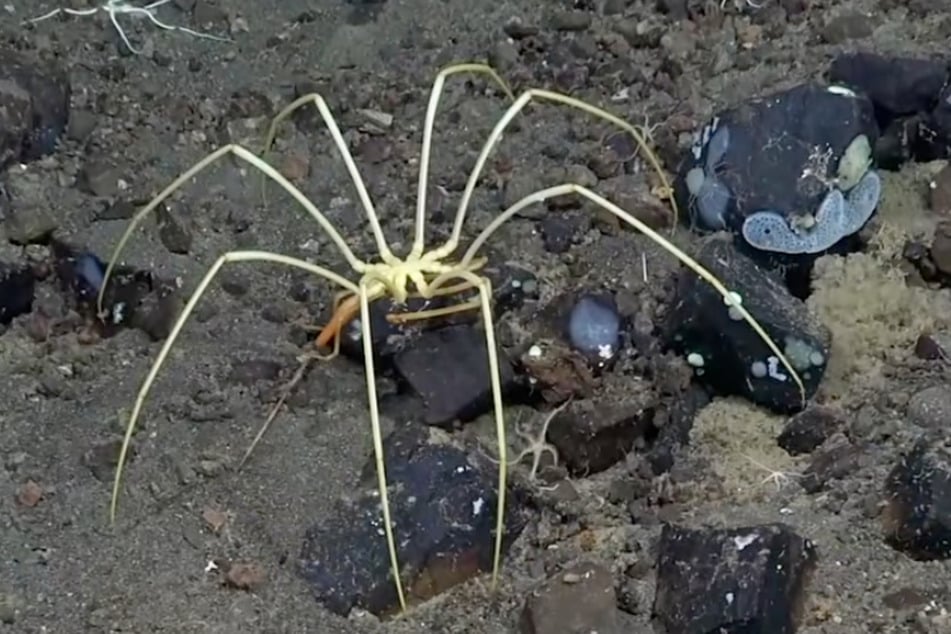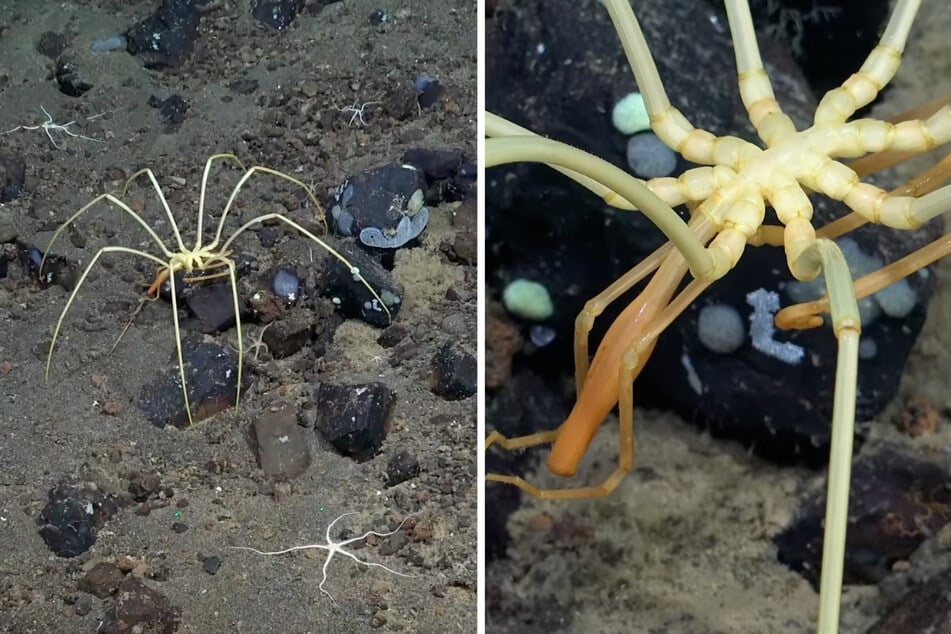What is that? Researchers find giant spider creature at a depth of 2000 meters
Antarctica - Creepy alert! In the icy South Atlantic, researchers have photographed this fascinating creature at a depth of 2000 meters.

Only recently, scientists from the non-profit Schmid Ocean Institute set off for the extremely remote South Sandwich Islands. Now the researchers have shared images of a particularly mysterious deep-sea dweller on Facebook.
The creature has eight legs with a yellowish shimmer - it does not appear to have a body. Instead, the animal is "extremely large" and has a bizarre grasping instrument that resembles a trunk.
The researchers explain: "This is a pycnogonid", a distant relative of land spiders, also known as isopod spiders.
Isopod spiders: Some species grow to three times the size of the largest tarantulas

More than 1500 species are known, most of which are found in the oceans of the southern hemisphere.
Because they have no lungs, the animals "breathe" through their exoskeleton. They are perfectly adapted to life in the deep sea, crawling around on the seabed, where they prefer to prey on snails, polyps and cnidarians.
While the smallest isopod spiders are only a few millimetres in size, some species reach the size of a plate and some grow up to 90 centimetres. For comparison: the largest spider ever caught and measured in the world, a Goliath bird spider(Theraphosa blondi), was "only" 28 centimetres in size according to the Guinness Book of Records.
Isopod spiders, although strictly speaking they are not spiders, would only laugh wearily if they could. Incidentally, the deeper the water, the larger the animals can grow. An effect that scientists call deep-sea gigantism.
"The enormous pressure and icy temperatures, which represent insurmountable obstacles for land dwellers such as humans, enable some animals to have a very slow metabolism and the ability to reach gigantic proportions," explain the marine researchers.